Master Theses
Please submit your topic of choice by December 16th, 2022 by filling out the form below:
Adaptive reduced order models with assimilation of measurements for damage monitoring
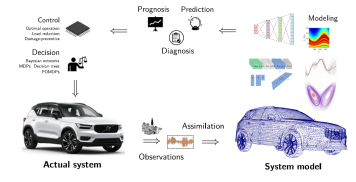
Supervisors: Konstantinos Vlachas (), Prof. Dr. Eleni Chatzi
Content
Condition monitoring in structural systems during damage or rapidly evolving degradation phenomena is a challenging process, inducing a dynamic behavior, which often spans beyond the one met during normal operating conditions. Apart from challenging the system's integrity, these events might degrade performance, while further rendering structural health monitoring strategies inapplicable.
The goal of this project is to derive a virtual representation of a real-life structural system, which can be used for structural health monitoring, and address the challenges of response prediction under damage, condition deterioration or extreme events.
Thus, the student will work on some of the following objectives depending on their interest:
• Derive the initial low-order digital representation from a Finite Element model of the system of interest
• Explore machine learning strategies to improve the performance and utility of physics-based reduced order models
• Fuse vibration response measurements with model dynamics to signal, localize and quantify damage and perform condition monitoring
• Explore data assimilation strategies, which exploit monitoring information to adapt the virtual model in actual operating conditions
Suggested Courses: Depending on interest: Structural Dynamics (or similar), and/or Method of Finite Elements (or similar) and/or Structural Identification (or similar)
Suggested Competencies: Basic knowledge on MATLAB or Python
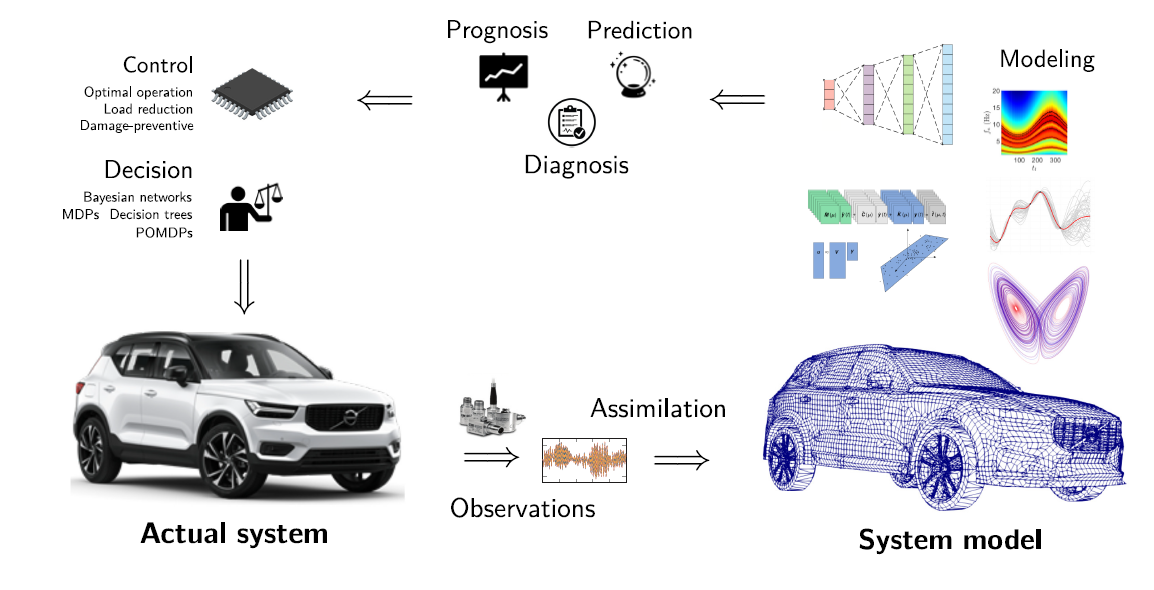
Innovative Coupling Technologies Using Iron-based Shape Memory Alloys (Fe-SMAs)
Supervisors: Ali Jafarabadi (), Dr. Marvin Schuster, Niels Pichner, Prof. Dr. Eleni Chatzi
Content
Designing mechanical couplers requires special considerations in order to ensure the integrity and re-liability of the joints and normally requires a sophisticated detailing. This limits the performance and progress of the assembly process in mechanical systems. Smart coupling technologies are the key members for improving the on-site as-assembly and construction speed. Innovative couplers made of Fe-SMAs are cost-competitive, and on-demand solutions for coupling metallic members and, particu-larly, for rebars and joints, thanks to a unique characteristic of the alloy, namely Shape Memory Effect (SME). The main goal of the project is to study different pre-straining methods and coupling perfor-mance numerically. The CAD files will be generated in the Rhino Grasshopper and a series of analysis will be performed in finite element analysis package, ABAQUS.
In addition, the intention is to conduct a series of pre-straining, activation and ultimately tensile pullout experiments in order to evaluate the performance of the Fe-SMA couplers. Different measurement devices such as DIC, Piezoelectric pressure sensors and strain gauges will be utilized to further understand the mechanical performance of the couplers
Suggested Courses: Structural Identification and Health Monitoring, Method of Finite Elements I
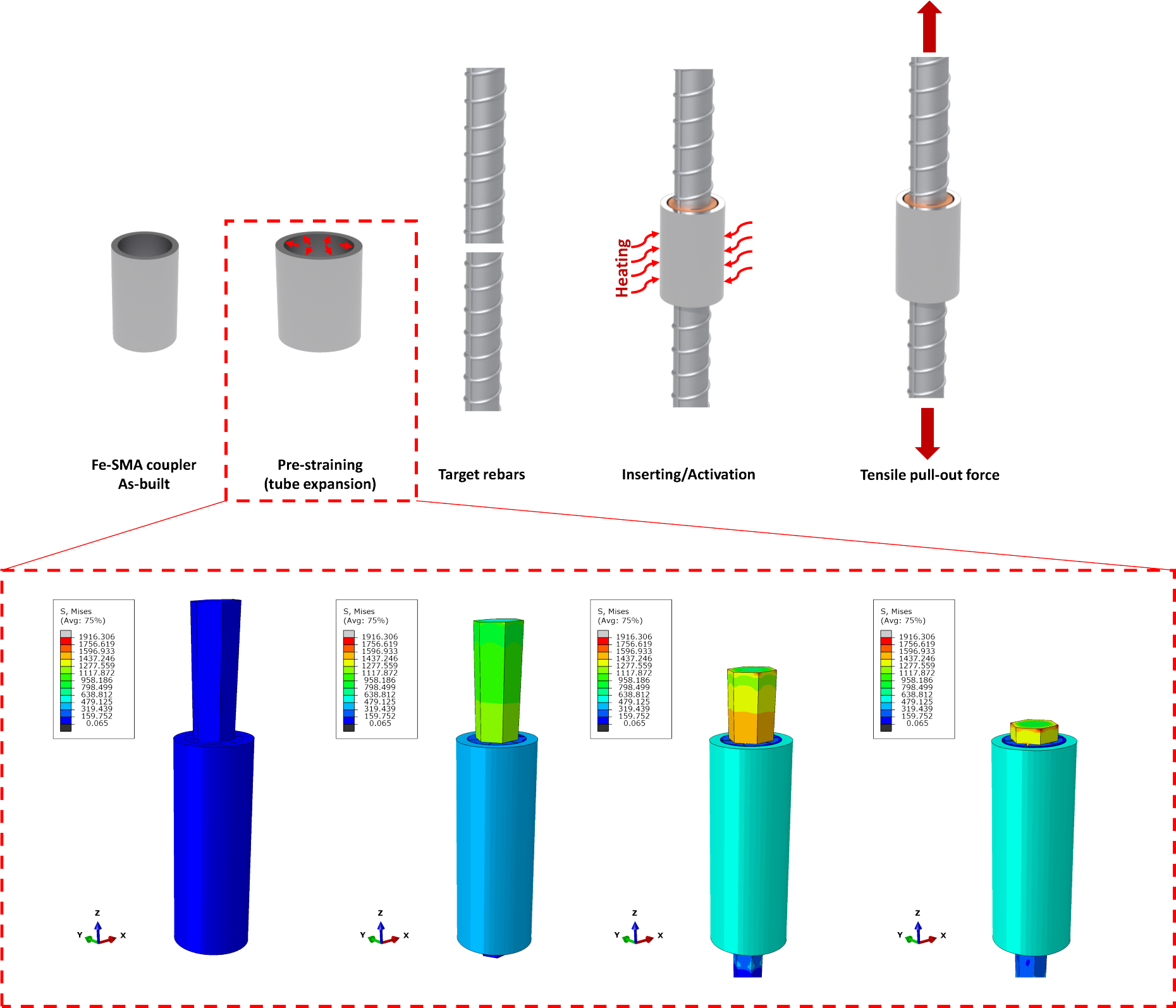
Simulating Structural Dynamics with Graph Neural Networks
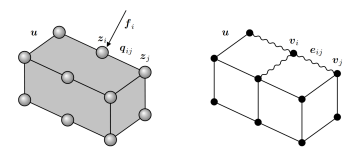
Supervisors: Gregory Duthé (), Kostas Vlachas (), Prof. Dr. Eleni Chatzi
Content
Graph Neural Networks (GNNs) have recently emerged as a powerful way to learn the dynamics of a physical process. Using standard meshing techniques, it is easy to decompose a physical problem, such as the dynamical simulation of a structure into a discrete graph, which a GNN can then operate on. In this thesis, we investigate the use of GNNs as alternative structural dynamics simulators. We will explore operations on graphs (incl. message passing) and their equivalence to sub-structuring and condensation schemes. It will also be important to include as many physics-based inductive biases as possible.
The student(s) will have the following objectives:
- Review the existing methods and literature
- Become familiar with the PyTorch Geometric framework
- Implement a first prototype, based on existing work from the literature
- Formulate methods for sub-structuring/condensation schemes which exploit the expressivity of GNNs
- Demonstrate the method on a simple case study
Suggested Courses: 101-0157-01L Structural Dynamics and Vibration Problems
Suggested Competencies: Python, PyTorch (or equivalent ML framework)
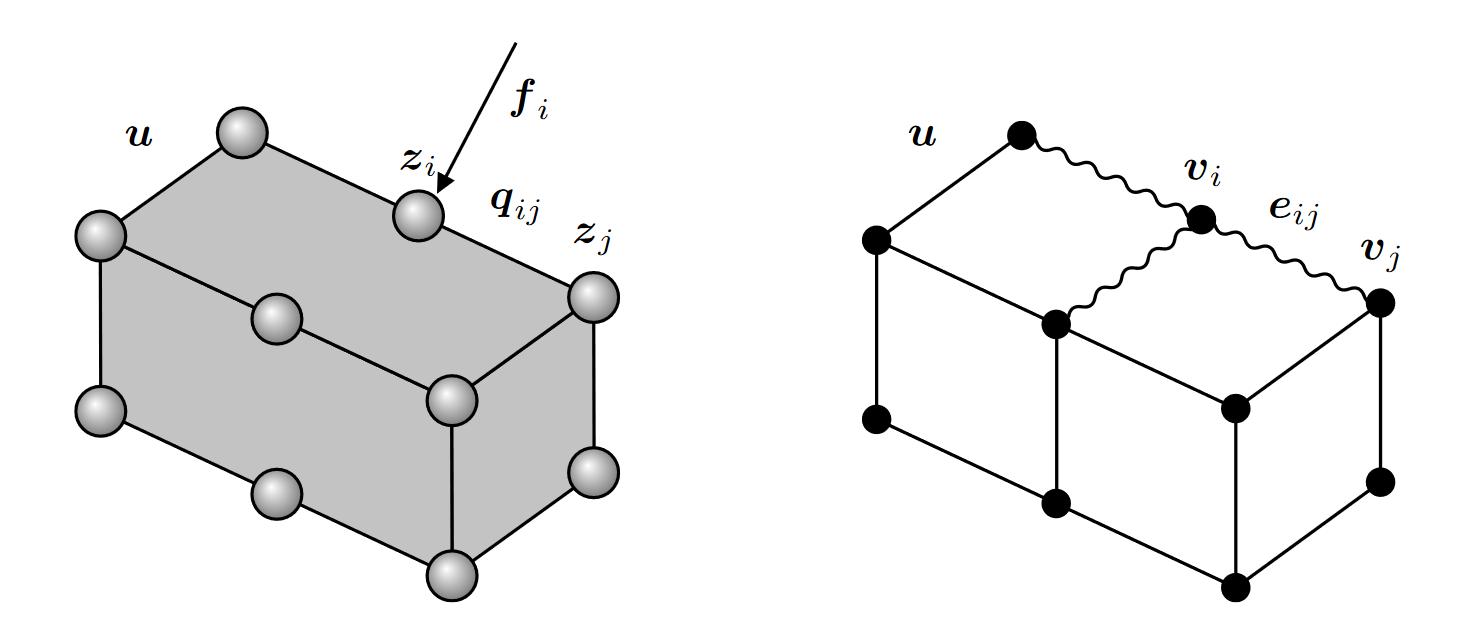
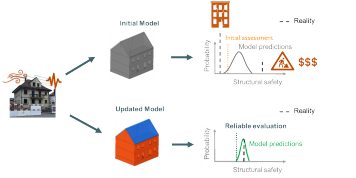
Digital twins – a small-scale demonstration
Supervisors: Dr. Yves Reuland (), Dr. Panagiotis Martakis, Dr. Larisa Garcia-Ramonda Estevez, Prof. Dr. Eleni Chatzi
Content
Many existing structures are nearing or passed already the service life they were designed for. With increasing traffic loads, the evolution of design codes, and material ageing engineers are tasked with assisting challenging decisions related to extending the lifetime of existing structures. The evaluation of existing bridges relies on computational models. Such representations of real structures, often termed as digital twins, should reflect real behavior as closely as possible and therefore, ideally involves monitoring data for calibration. Unvalidated modelling assumptions may lead to unrealistic evaluations, due to various sources of uncertainty and systematic errors:
• When real safety is lower than the model prediction, the assessment is insufficient and possibly unsafe.
• In case the real safety is higher, the assessment is overconservative and translates to unnecessary and expensive retrofit activities
With the use of a simple experimental structure, the entire chain of structural health monitoring, from measuring, through model calibration, until behavior prognosis will be addressed and validated. Such a holistic approach introduces the student into the necessary steps to develop a robust and accurate digital twin of an existing structure. Master thesis on monitoring-driven digital twinning of structures allows students to increase and deepen their knowledge of key aspects of structural dynamics, structural health monitoring, numerical modelling, uncertainties, and assessment of existing structures; through following the following steps:
- Design a monitoring campaign for a simple experimental specimen
- Develop numerical models of the experimental specimen
- Calibrate the numerical model based on the vibration monitoring of the specimen
- Estimate the uncertainties pertaining to the measurement and the model
- Study the influence of the amount and location of sensors on the model calibration
- Predict the structural behavior under new loading scenarios
Suggested Courses: Seismic Design
Possible to select as: obligatorishce Projektarbeit, praktische Projektarbeit, forschungsbezogene Projektarbeit
Limitation of offerings: 2 students (group work is possible)
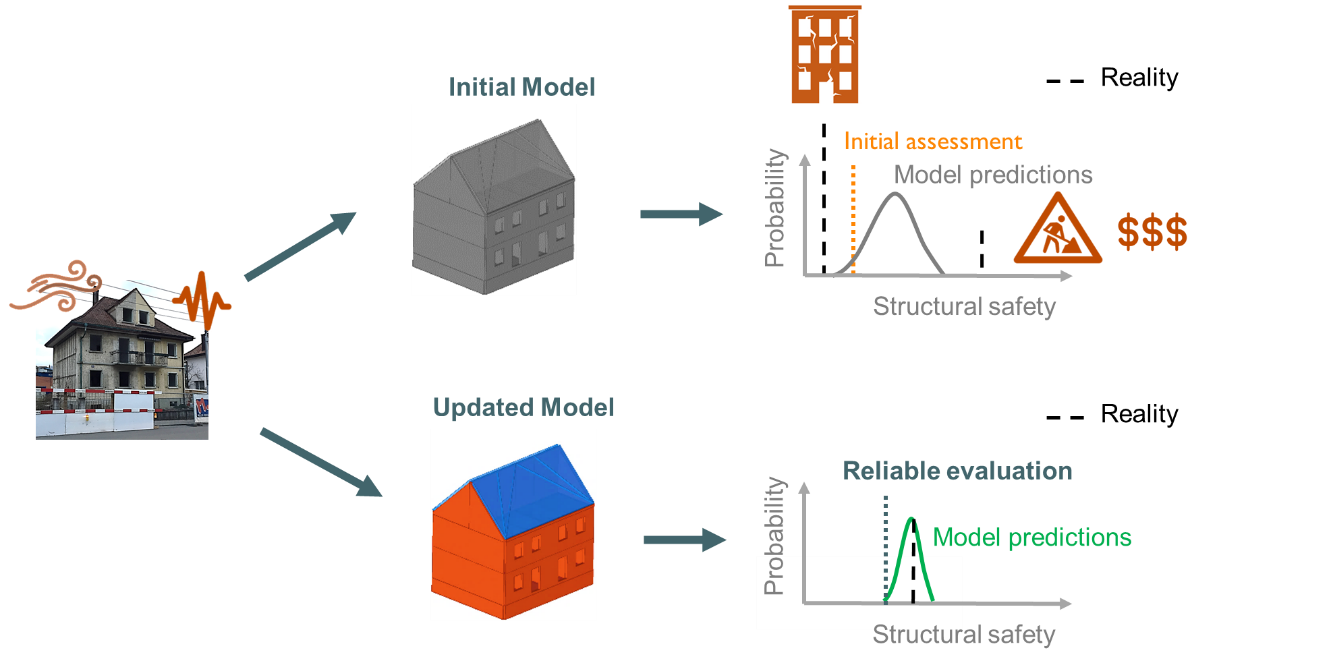
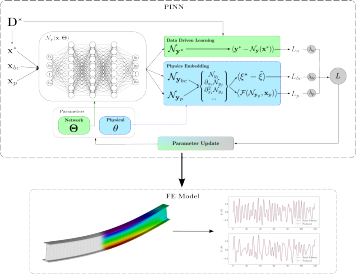
Finite-Element Updating Using Physics-Informed Neural Networks
Supervisors: Dr. Marcus Haywood-Alexander Marcus (), Prof. Dr. Eleni Chatzi
Content
Many high-value structural systems (such as bridges or wind turbines) monitor vibration data as a means of detecting faults within the structure or system. Modal characteristics of such systems can act as direct indicators of changes in local physics properties, and finite-element-model updating provides an approach to identify these properties on a finer resolution. With the explosion of data availability and data-driven machine-learning techniques, these have been used to drive such complex models. However, they require a large amount of data to adequately capture the model of modal characteristics to physical properties. Physics-informed are a popular new class of physics-enhanced machine learning algorithms, which utilise known physics in the form of ordinary/partial differential equations to promote the machine learning algorithm towards physically-informed solutions. By including the physical-properties as learnable parameters in training, PINNs can be used in a system-identification task.
The aim of this thesis would be to study the application of combining finite-element models with physics-informed neural networks to estimate local physical properties of a dynamic structure. In this thesis, the student will be expected to:
- Review the current state-of-the-art in literature
- Become familiar with physics-informed neural networks, and apply them to simple problems
- Develop a method for combining finite element models and physics-informed neural networks (FE-PINNs)
- Study the use of FE-PINNs in the context of novelty detection via model-updating, applying them to data from simulated or experimental data
Suggested Courses: Structural Identification and Health Monitoring, course on machine learning methods
Suggested Competencies: Python/MATLAB
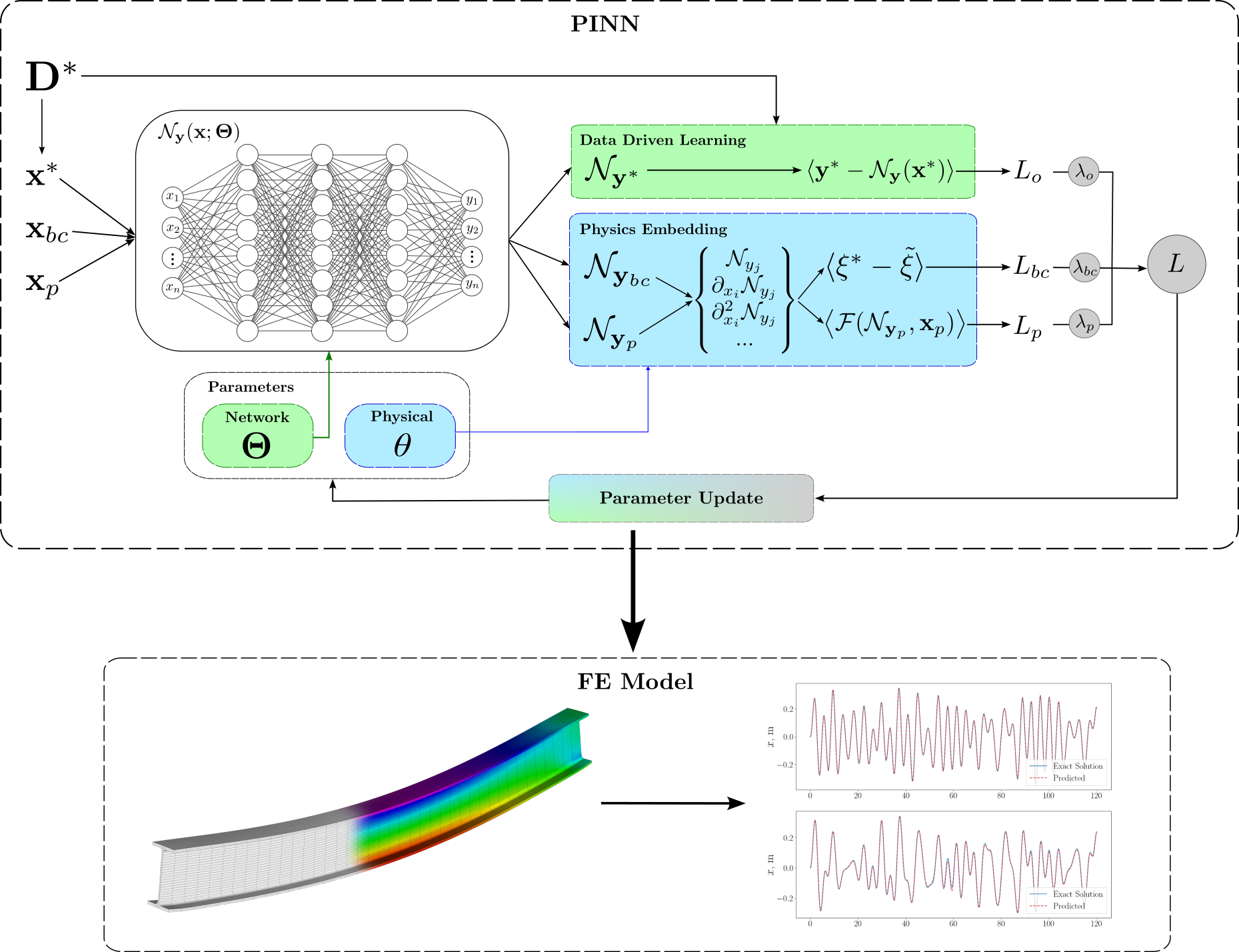
Improving the design of rotating parts of wind turbine through metamaterial technology

Supervisors: Dr. Vasilis Dertimanis (), Prof. Dr. Eleni Chatzi
Industry Partners: Dr. Luca Sangiuliano, Phononic Vibes
Content
In the context of novel lightweight materials for noise and vibration reduction, Phononic Vibes Srl (https://phononicvibes.com/) is researching, designing and producing metamaterial technology. Metamaterials are often periodic structures, consisting of a host structure with embedded or added resonant structures, leading to superior vibro-acoustic attenuation performance in some tunable frequency ranges, called stop bands. In the following videos, the metamaterial concept is applied structure-borne (https://www.youtube.com/watch?v=DUee93HcPVQ&t) and airborne noise problems.
The resonant structures often have some small features that control their tuned frequency and the dynamic behavior of the entire metamaterial system. Once these resonant structures are applied to rotating systems, the stop band behaviour can be modulated according to the rotation speed to the entire system thanks to the presence of inertial forces (ref. 1). This interesting phenomenon can give rise to new methods to control the dynamic behavior of rotating systems and to reduce the unwanted dynamics.
Rotating parts of wind-turbines are often subjected to extreme dynamic conditions. To ensure the long service life and optimal design of rotating parts of wind-turbines, thus preventing failures and expensive maintenances, the dynamic behaviour of these parts must be thoroughly designed and controlled.
The goal of this master thesis is then to investigate the potential of metamaterial technology applied to the rotating parts of wind turbines to control and preserve their dynamic behaviour. In particular, the student will explore how to exploit the modulation effect given by the inertial forces to tune the metamaterial system to reduce critical dynamic conditions. Analytical and numerical models will be developed by the student to study the physics and to assess the metamaterial performance applied to such systems. The aim is to propose design guidelines to achieve a robust design solution.
This thesis is in collaboration with Phononic Vibes Srl and is mainly simulation-based.
Suggested Competencies: Python/MATLAB
Application of AI-assisted system identification for early fault detection in quality control
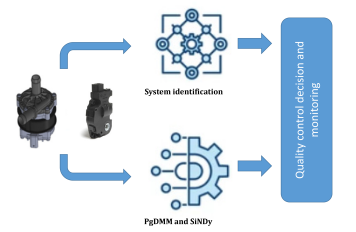
Supervisors: Dr. Vasilis Dertimanis (), Prof. Dr. Eleni Chatzi
Industry Partners: Dr. Roman Klis, Dr. Enno De Lange, Johnson Electric
Content
Accurate detection of failures in manufactured parts is crucial for ensuring the quality of final products, especially in quality-oriented industries supplying components to demanding end-customers, such as automotive or industrial goods. Current state-of-the-art failure detection procedures involve rigorous testing, generating large time series datasets, leading to time-consuming processes for each product.
This master's thesis explores strategies to reduce testing time through the application of AI systems. Specifically, it proposes a comprehensive methodology for enhancing currently existing monitoring by integrating physics-inspired models and deep learning techniques. Existing solutions utilize a physics-inspired model coupled with Unscented Kalman Filter (UKF)/Extended Kalman Filter (EKF) for pump problem analysis, and the thesis aims to advance this approach.
The suggested methodology involves leveraging existing datasets and the best-performing model as an inductive bias in a Deep Bayesian Filter within the Probabilistic Graphical Dynamic Mode Decomposition (PgDMM) framework. This integration promises a more nuanced understanding of system dynamics and uncertainties, resulting in improved accuracy and robustness.
Additionally, the thesis advocates for extending the learned model's interpretability through dictionary learning, specifically employing Sparse Identification of Nonlinear Dynamics (SiNDy). This interdisciplinary research, bridging physics-based modeling and deep learning, represents a substantial contribution to the field of system monitoring, offering a promising path for future advancements in industrial applications.
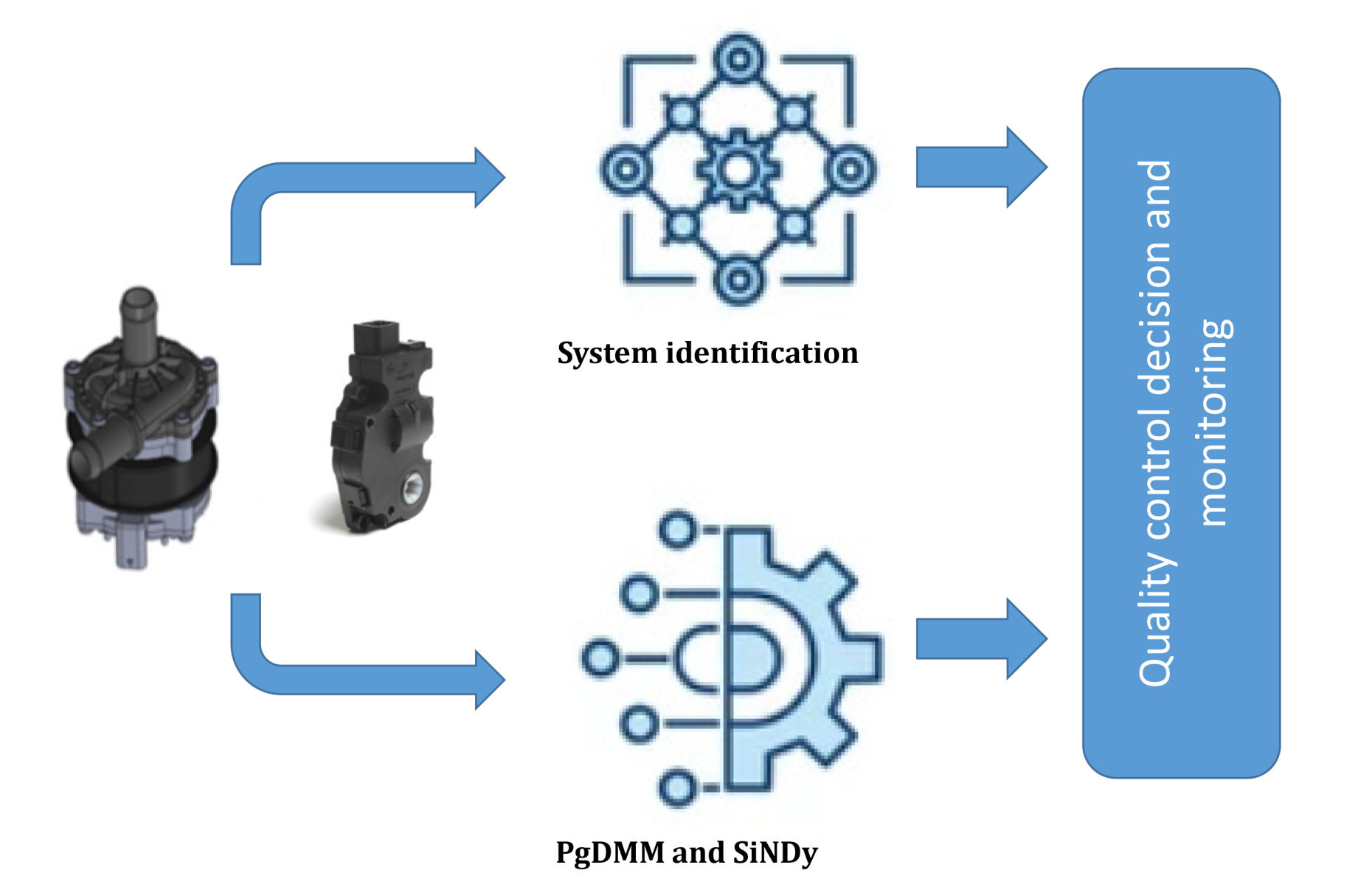
Your selection has been recorded
We will follow up with you asap, in order to confirm availability of the selected topic.

